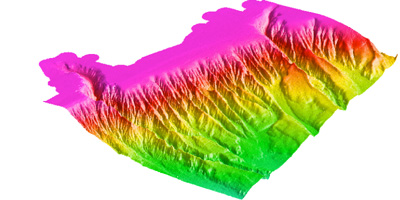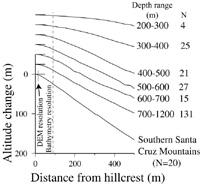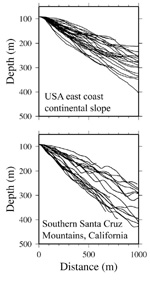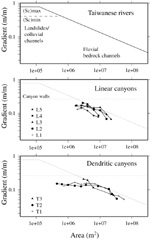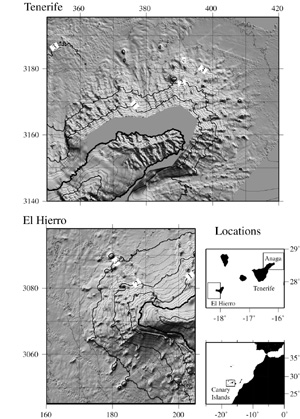The following pages show how submarine hillsides can have similar "threshold" slopes to those found on land, how submarine canyons can have analogous variations between canyon catchment area and channel slope to those of rivers, and how smooth "diffusional" landscapes can also be found in these two different environments.
Developing "quantitative geomorphology" under water is hampered by the inaccessibility of these areas and a lack of techniques (erosion rates cannot be quantified by cosmogenic radionuclide dating, for example, because seawater rapidly absorbs cosmic radiation). This work instead explores geometrical analogies between submarine and subaerial geomorphic systems. Although the sedimentary processes causing these analogous characteristics are different, the similarity suggests that we might look for mathematical similarity in the outcomes of geomorphic processes. That in turn should guide efforts in collecting new datasets and in developing new techniques to quantify geomorphic processes.
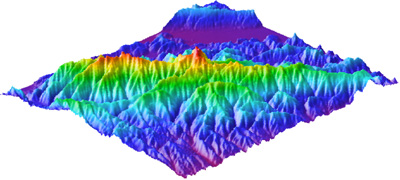
The figure above shows a computer-generated image of the Southern Santa Cruz Mountains of California, an area uplifted by motion along the San Andreas fault system. Notice that the range has sharp (angular) hillcrests and the hillsides are relatively straight, not rounded. These are typical attributes of rapidly uplifting tectonic landscapes. (DEM data courtesy of the US Geological Survey.)
